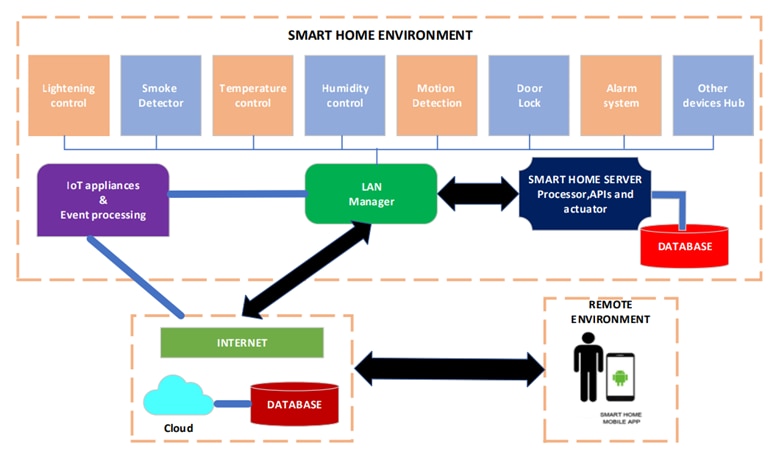Introduction
One similarity among different industries, is a need for energy. This essential resource unlocks possibilities for investments, innovations, and new businesses that then lead to job creation, sustainable growth, and shared prosperity for entire economies. However, increasing energy demand, rising costs, volatile energy markets, and geopolitical headwinds are factors that can derail business confidence. Many organizations are thus forced to find innovative methods for monitoring, controlling, and saving energy.
Energy Efficiency
Energy efficiency is a more effective and economical solution to address issues like energy security, carbon emissions, and high operating costs. It not only reduces the energy requirements to produce goods and provide services but also helps to limit energy waste. The benefits of energy efficiency can be seen in various sectors like buildings, transportation, industry, and power generation.
Internet of Things (IoT)
Increasing energy insecurity and escalating costs are compelling organizations to search for new methods to increase energy efficiency. One promising solution is the Internet of Things (IoT) technology. IoT is crucial in multiple forms and capacities across the energy sector. IoT allows real-time monitoring and reporting, allowing users to make quick, actionable decisions followed by effective actions. The sensors and actuators used in IoT help in identifying the amount of energy consumed. IoT can also assist in finding the exact source of excess energy usage.
The following are some systems that can aid in energy efficiency:
- Smart Metering: Smart metering can assist the energy management system in keeping track of the energy consumption of each device. The meter will provide details concerning device usage trends (like identifying the peak hours) and can anticipate future energy demand. Energy suppliers may also use this information to adjust their supply to meet the needs of their customers and ensure that they always utilize optimal energy. Such utilization will lead to better energy distribution and pricing.
- Smart Lighting: IoT-based smart lighting is a critical move towards sustainability. The adoption of IoT can reduce lighting-related energy expenses by approximately 80 percent. The user needs a phone or a tablet (or any other smart device) connected to a network that assigns the IP addresses to light bulbs so that their brightness can be changed on demand. Smart lighting solutions deliver comfort and convenience while conserving energy.
- Smart Sensors: Smart sensors perform accurate and automated data collection, analyze the data, and transmit the same data. These are vital to IoT technology. These sensors allow manufacturers to save money by tracking energy consumption, occupancy, and environmental conditions wherever possible. Smart sensors acquire real-world data (physical or chemical parameters) and use integrated circuits (ICs) to transform the data into digital form. However, an Application Specific Integrated Circuit (ASIC) would be a better choice to achieve optimized sensor performance.
IoT-based Smart Home Example
Figure 1 represents the main components of an IoT-based smart home. It shows how the individual components interconnect. The smart home environment on the left block consists of typical devices connected to a local area network (LAN). The LAN helps the devices to communicate within themselves and outside. A server and its database are linked to the LAN. The server manages the devices, logs their activity, generates reports, responds to queries, and performs the relevant instructions. The smart home server transports data to the cloud. It remotely activates tasks using application programming interface (API) procedures for more extensive or everyday tasks. Moreover, IoT home appliances are linked to the internet and the LAN, expanding the smart home to incorporate IoT. The internet connection enables the end user, the resident, to connect with the smart home to obtain current information and remotely initiate actions.

Figure 1: IoT-based smart home
Conclusion
The IoT ensures energy sustainability and efficiency by optimizing production, distribution, and consumption, in addition to reducing carbon impact. IoT can thus transform our lives and improve how we utilize resources, especially energy.
Frequently Asked Questions (FAQs)
- What is the role of IoT in energy? The implementation of IoT helps energy-saving projects and operations in urban infrastructure, buildings, power generation and distribution, and industrial facilities worldwide. An IoT-powered energy management system uses smart sensors to analyze, assemble, and convert energy data into useful information. Such information can be used to make better business decisions and increase the energy efficiency quotient.
- How does Smart Home Technology save energy? The Smart Home system uses IoT to control appliances and devices from a remote location automatically. They are used in residences to save money on electricity bills by reducing power consumption when not needed, turning on lights at specific times when natural light is absent, or heating the space when it is cold.
- Does IoT decrease energy efficiency? An IoT system energy to transmit vast amounts of data generated from IoT devices, thus affecting its efficiency. However, efficient communication protocols, smart sensors, and energy-efficient routing techniques can overcome this challenge.
- How is the energy saved and harvested in IoT devices? IoT devices depend exclusively on battery power for their operation, which adds cost and limits effectiveness in their application. This challenge can be overcome by Energy harvesting. The Energy harvesting- process captures energy from ambient sources such as radio frequency (RF) waves, light, thermal gradients, or mechanical vibration to power IoT devices.
